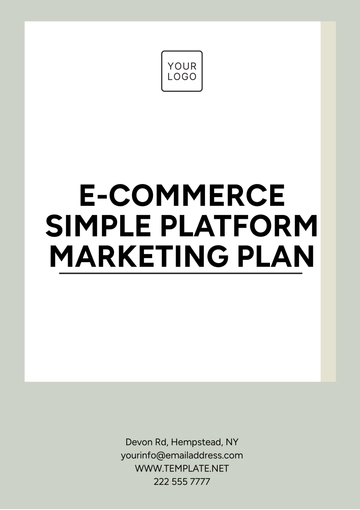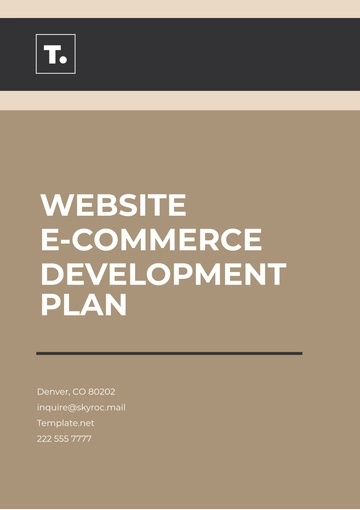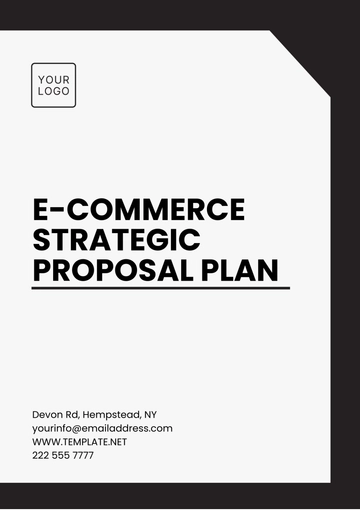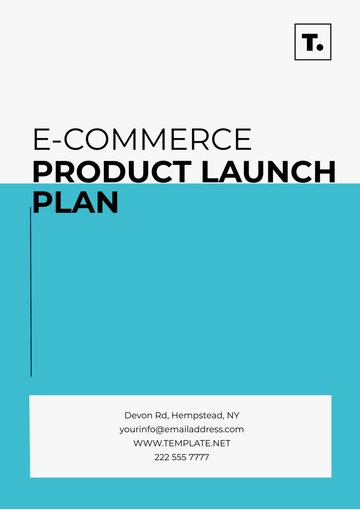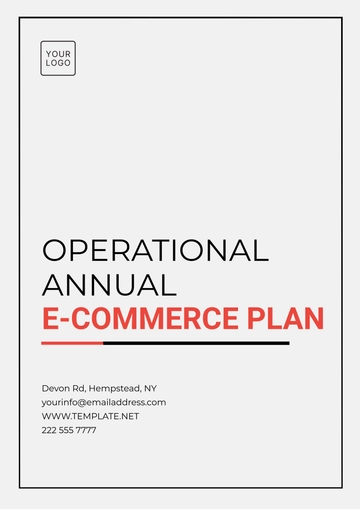Market Research Design E-Commerce Plan
Prepared by: [YOUR NAME]
Organization: [YOUR COMPANY NAME]
Date: July 5, 2050
1. Executive Summary
This Market Research Design E-Commerce Plan aims to provide a structured approach for gathering insights about the e-commerce landscape, focusing on understanding customer preferences, competitive dynamics, and market trends. The findings will support strategic decision-making and enhance overall business performance.
2. Research Objectives
Identify Customer Preferences: Understand the purchasing behavior, preferences, and pain points of target customers.
Analyze Market Trends: Monitor current and emerging trends within the e-commerce sector that may impact business strategy.
Evaluate Competitor Strategies: Assess competitors' strengths, weaknesses, and market positioning to identify opportunities for differentiation.
Measure Customer Satisfaction: Gauge customer satisfaction levels with existing products and services to identify areas for improvement.
3. Target Market Identification
Demographics: Define the age, gender, income level, education, and location of the target audience.
Psychographics: Explore lifestyle choices, interests, values, and purchasing motivations.
Behavioral Segmentation: Analyze past purchasing behaviors, brand loyalty, and online shopping habits.
4. Data Collection Methods
4.1 Qualitative Methods
Focus Groups: Conduct discussions with selected customers to gather in-depth feedback on products and services.
Interviews: One-on-one interviews with customers to explore their experiences and preferences in detail.
4.2 Quantitative Methods
Surveys: Deploy online surveys using tools like SurveyMonkey or Google Forms to collect structured data on customer preferences and satisfaction.
Website Analytics: Utilize tools like Google Analytics to track customer behavior on the e-commerce platform, including traffic sources, bounce rates, and conversion rates.
Social Media Listening: Monitor social media platforms for customer feedback, sentiment analysis, and emerging trends.
5. Analysis Techniques
Statistical Analysis: Employ statistical tools (e.g., SPSS, R) to analyze quantitative data and identify significant patterns and correlations.
Thematic Analysis: Analyze qualitative data from focus groups and interviews to identify recurring themes and insights.
Competitive Benchmarking: Compare data against industry standards and competitor performance metrics to assess market positioning.
6. Reporting Framework
Data Visualization: Present findings using charts, graphs, and infographics to enhance clarity and comprehension.
Executive Summary Report: Create a high-level report summarizing key findings and recommendations for stakeholders.
Detailed Findings Document: Provide a comprehensive report detailing methodologies, data analysis, and insights for internal teams.
7. Implementation Timeline
Phase | Activities | Timeline |
|---|
Research Planning | Define objectives, identify the target market, finalize methods | Month 1 |
Data Collection | Conduct surveys, focus groups, and analytics | Month 2-3 |
Data Analysis | Analyze collected data using specified techniques | Month 4 |
Reporting | Prepare and present findings to stakeholders | Month 5 |
Action Plan Development | Develop strategic recommendations based on findings | Month 6 |
8. Budget Estimate
Item | Estimated Cost |
|---|
Survey Tools | $500 |
Focus Group Incentives | $800 |
Data Analysis Software | $300 |
Reporting & Presentation | $200 |
Total Estimated Budget | $1,800 |
9. Common Use Cases
New Product Development: Assess customer needs and preferences for launching new products.
Market Expansion: Analyze the potential for entering new geographic or demographic markets.
Customer Experience Improvement: Identify areas of improvement based on customer feedback.
Performance Tracking: Monitor the effectiveness of marketing strategies and campaigns.
10. Conclusion
This Market Research Design E-Commerce Plan provides a comprehensive framework for understanding the dynamics of the e-commerce market. By following the outlined methodologies and processes, businesses can gather valuable insights that inform strategic decisions and enhance overall market performance.
Plan Templates @ Template.net







